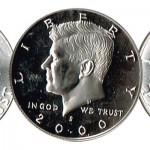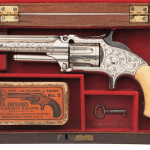Baseball cards, classic cars, famous works of art; few things offer as interesting and as clear a window into the past as the items our society chooses to curate collections for. Nonetheless, taking time to consider why we choose to put our time, money and energy into obtaining these relics of yesteryear offers some interesting conclusions regarding the nature of the activity as a whole. Simply put: collectibles and the processes of procuring and preserving them (such as collectible auctions) help us craft our views of the past. In order to understand this, one need not look any further than these examples, both modern and classic, of collectors:
Making the forgettable valuable
One of the foremost traits of how collectibles shape our view of the past has to do with simple supply and demand. Items that there are not very many of, naturally, become more valuable as time goes by. That said, this dynamic of viewing rare relics from the past as valuable couldn't work without the collector mentality. Consider the example of a 1908 Honus Wagner Pittsburgh Pirates trading card. In 1909, the American Tobacco Company put a special insert in their packs of cigarettes: A Honus Wagner baseball card. Shortly thereafter, it surfaced that Wagner was deeply against smoking and the company pulled the promotion. Only 60 cards made it into stores. Nearly a century later in 2000, one of those cards was sold on eBay for over $1 million. Here, we see that something worth effectively nothing (really just a printed piece of paper) grew into something worth an exorbitant amount of money. This is a prime example of how collectibles shape our view of the past; something rare becomes valuable.
Maintaining heroes, myths and legends
Collectibles allow us to maintain the relevance of parts of the past that matter to us. When we see the value of a collectible item increasing over time, it represents, more often than not, the value placed on it by the individuals who were affected by its cultural impact at one point or another. For example, the vast majority of the world probably holds little to no interest in vintage comic books. Those who do, though, have been able to maintain the relevance of those products through forging a dedicated and loyal contingent of collectors. Need proof? The first issue of The Amazing Spider-Man, first published in 1962 with a cover price of $0.12, was worth over $6,000 in 2006.
Passing history across generations
Perhaps the single most prominent way in which collectibles help to shape our view of the past is that they allow us to offer something tangible to younger generations when we speak about history. Wars, revolutions, innovations and inventions; some of the most formative moments in the history of mankind will never truly be relatable to future generations, simply because they were born after the fact. When we speak of these moments, having collectibles enables us to offer tangible artifacts to better aid understanding. Consider the role of galleries and museums, such as the National WWII Museum in New Orleans, in maintaining our knowledge and remembrance of the war. And what is a museum except a large series of collectibles that allows us to better understand history?



